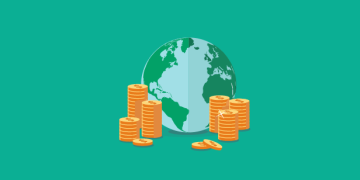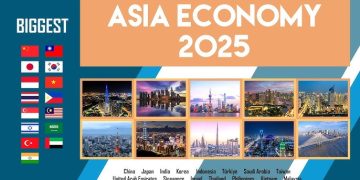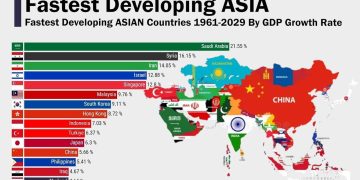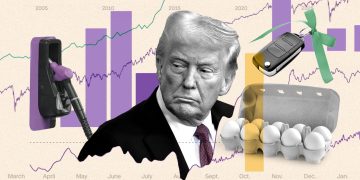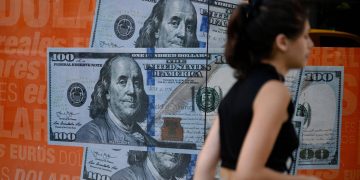Consumer Confidence and the Post-Stimulus Economy: How U.S. Households Are Redefining Growth
1. The Waning Echo of Fiscal Stimulus
When the United States entered 2025, the echoes of the pandemic-era fiscal and monetary stimulus had largely faded. Between 2020 and 2022, the federal government injected over $5 trillion into the economy through direct payments, enhanced unemployment benefits, and large-scale asset purchases. Those measures created a unique consumption surge, driving record household spending and accelerating the post-pandemic recovery.
Yet by late 2024 and early 2025, the landscape had shifted dramatically. Stimulus savings were depleted, interest rates had reached their highest levels in two decades, and consumer sentiment was cooling. The U.S. economy—once powered by pent-up demand and easy credit—entered a new phase characterized by caution, recalibration, and redefinition.
2. The Psychology of Spending in a Cautious Era
Consumer confidence remains one of the most closely watched indicators of U.S. economic health. The Conference Board’s Consumer Confidence Index, which surged above 110 in mid-2023, slipped below 100 by mid-2025. This decline reflects a deeper psychological transition among households: from exuberance to restraint.
Americans are not necessarily pessimistic; rather, they have become selectively optimistic. The shift can be seen in spending patterns—less emphasis on discretionary goods, more on services and essential experiences. Restaurant dining, travel, and health-related expenditures have remained resilient, while big-ticket purchases such as vehicles and home improvements have slowed sharply.
The psychology driving this trend is complex. Elevated inflation, though moderating, continues to erode purchasing power. Rising borrowing costs discourage new debt. And geopolitical tensions—from Europe to the Indo-Pacific—fuel a lingering sense of uncertainty. In effect, the American consumer is still active, but now more defensive and value-driven.
3. Debt, Savings, and the Fragility Beneath the Surface
One of the most striking developments in the post-stimulus era is the reversal of household financial buffers. During the pandemic, the personal saving rate in the U.S. soared above 30%. By 2025, it had fallen below 4%—its lowest level since before the Great Recession.
Simultaneously, credit card balances reached record highs, exceeding $1.1 trillion according to the Federal Reserve Bank of New York. Delinquency rates, while not alarming yet, are climbing steadily. This combination—shrinking savings and growing debt—creates a fragile foundation for continued consumption.
Yet this fragility coexists with resilience. Employment remains historically strong, wages are still growing (albeit slowly), and household wealth, buoyed by stock market gains, has recovered from 2022 lows. What emerges is a two-speed consumer economy: affluent households continue to spend freely, while lower-income groups cut back significantly.
4. Income Inequality and the Dual Economy
The divergence between income groups has intensified in 2025. Higher earners—those with stable jobs in technology, finance, and professional services—have seen their wealth expand through investment gains and rising property values. Meanwhile, middle- and lower-income workers face wage stagnation and increasing living costs.
This dual structure reshapes the composition of U.S. demand. Luxury travel, premium wellness products, and technology subscriptions flourish, while discount retailers and fast-food chains report higher volumes from cost-conscious consumers. The middle market—once the stable backbone of American retail—is increasingly squeezed.
Economists warn that this polarization undermines long-term growth potential. A healthy economy depends not only on aggregate spending but on broad-based participation. If the middle class retreats, the overall consumption engine weakens—even if aggregate data still look stable.
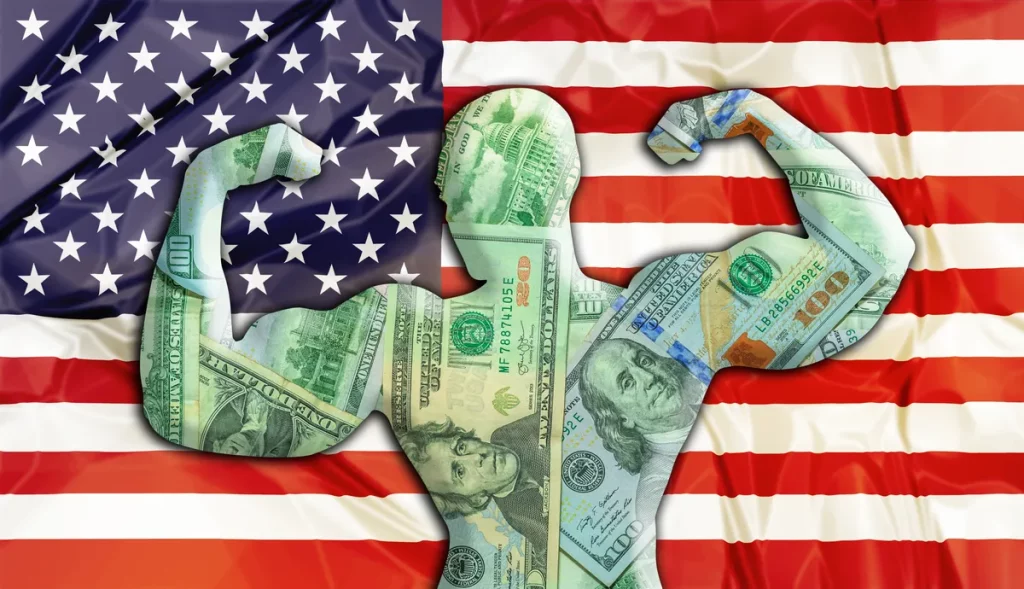
5. The New Consumer Priorities: Experience, Technology, and Sustainability
Despite these pressures, American consumers are not retreating from the marketplace; they are redefining it. Three emerging trends illustrate this transformation:
a. The Experience Economy.
Post-pandemic consumers continue to value experiences—travel, entertainment, fitness, and community events—over material goods. Airlines, hospitality groups, and live-event industries report strong bookings, even as traditional retail lags. This reflects a psychological pivot: after years of isolation, consumers seek connection and meaning.
b. The Technology-Infused Lifestyle.
AI-driven devices, smart home systems, and digital services remain growth frontiers. The proliferation of generative AI tools, personal automation assistants, and mixed-reality entertainment has created a new layer of demand—especially among younger demographics.
c. The Green Consumer Shift.
Sustainability is no longer a niche preference. Electric vehicles, renewable-energy installations, and eco-friendly products occupy growing market share. Interestingly, consumers increasingly expect corporations—not governments—to lead climate action through transparent, measurable commitments.
6. Labor Market Resilience and Its Limits
The strength of the U.S. labor market continues to anchor consumer confidence. The unemployment rate remains below 4%, and participation rates among prime-age workers have rebounded. However, beneath the surface, cracks are visible. Productivity growth has stagnated, and wage gains are slowing relative to inflation expectations.
Moreover, automation and AI adoption are reshaping employment dynamics. While tech-driven sectors expand, traditional manufacturing and administrative roles face attrition. This uneven evolution fuels both optimism (for efficiency) and anxiety (for job security).
A critical question for 2025 and beyond is whether labor resilience can persist without renewed policy support or significant productivity gains. If employment softens, the consumer-driven growth model could falter quickly.
7. Monetary Policy, Inflation, and Household Sentiment
The Federal Reserve’s balancing act—taming inflation without triggering recession—remains the defining macroeconomic backdrop. As of mid-2025, inflation has cooled to around 2.6%, down from over 6% two years prior. But “sticky” service prices and housing costs keep real inflationary pressure alive for households.
High interest rates, while stabilizing prices, have suppressed mortgage activity and constrained credit. The average 30-year mortgage rate hovers above 6.8%, keeping homeownership out of reach for many younger Americans. Auto loans and credit card APRs have surged as well. These financial headwinds translate directly into subdued consumer optimism.
8. Cultural and Generational Shifts in Consumption
Younger generations—Millennials and Gen Z—are redefining what economic participation means. Many prioritize flexibility, entrepreneurship, and digital platforms over traditional employment. Their consumption patterns favor subscription models, creator economies, and values-driven brands.
Meanwhile, Baby Boomers, who control a majority of U.S. wealth, are entering a phase of selective spending—prioritizing health, travel, and intergenerational transfers. The intersection of these trends creates a volatile but fascinating consumption mosaic: digital ambition meets demographic caution.
9. Looking Ahead: Confidence in Transition
As the U.S. moves into the second half of the decade, consumer confidence will remain both a reflection and a driver of economic reality. The question is not whether Americans will spend—they will—but how and why they choose to spend will determine the shape of growth.
Policymakers face a delicate equilibrium: supporting demand without reigniting inflation, encouraging saving without stifling consumption, and addressing inequality without undermining innovation. The post-stimulus era thus becomes a laboratory for testing the adaptability of both markets and mindsets.
10. Conclusion: Redefining Growth Through Restraint
The American economy in 2025 is neither booming nor collapsing—it is maturing. The exuberance of stimulus has given way to introspection. Growth, once fueled by excess liquidity, now depends on confidence, creativity, and structural reform.
Consumers, rather than policymakers, have become the ultimate macroeconomic variable. Their cautious optimism, selective priorities, and adaptive resilience are reshaping the world’s largest economy in real time.
If the United States can sustain this psychological balance—between prudence and ambition—it may yet transform post-stimulus restraint into a new foundation for sustainable growth.





